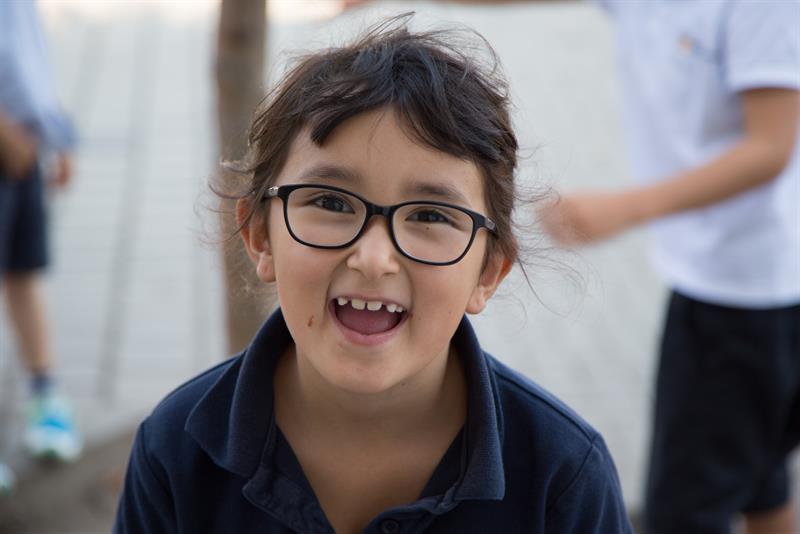
Summer is running at full speed, but for many families the first day of school is approaching. Many parents wonder which schoolbag is best for their child. Here you can find out what you should look out for when buying one, what things belong in it and how to pack it properly.
This is what you should pay attention to when buying a school bag
In Germany, high-quality school bags comply with the industrial standard DIN 58124 and are additionally provided with the GS mark for tested safety. You should pay attention to both signs when buying. What does this proof of quality mean?
Reflective material and many colors

The DIN standard stipulates that "at least 20 percent of the visible surfaces of the front and side parts are made of fluorescent material and at least 10 percent of these surfaces are made of retroreflective material", says the Consumer Information System Bavaria. Therefore your child is also visible at dusk or in poor lighting conditions, e.g. through fog, and the school bag lights up in headlight. In addition, bright, colorful and eye-catching patterns contribute to the increased visibility of your child.
Robust school bags made of plastic or leather
The GS mark assures that the bag will withstand the expected stresses. It should also be stable when filled. The welding or thread seams must be well processed. Due to the risk of injury, the bag must not have any sharp corners or edges. Plastics and synthetic fibres are particularly suitable as materials because they are light, robust and water-repellent. However, these materials are not sustainable and therefore ecological bags made of vegetable tanned leather or used satchels in good condition can be an alternative.
Maximum 1.3 kg unfilled

A normal school bag weighs between one and 1.3 kg without contents, so that it does not become too heavy when filled. In addition, it must lie well against the back and must not sit too low. It should end with the child's shoulder edge and the width of the bag should correspond to the child's shoulder width. The carrying straps must be at least 4 centimetres wide and – like the back – well padded. Make sure that the straps are easily adjustable and that your child does not get any pressure points. The flap should also not close by itself, so that school supplies are always at hand. The school bag closing mechanism should be easy for your child to use, as he or she will need it many times a day.
Trying on is important

Be sure to take your child with you when you buy the schoolbag, as the only way to ensure that it fits is to try it on. In the end, your child should also like the bag and feel comfortable with its shape and colors. The recommended price for a new bag is 150 Euros on average. Used school bags can be found at lower prices.
What belongs in the school bags?

- The textbooks that you usually should give a protective cover before the first day of school so that they do not suffer from wear and tear so quickly. In some schools, such as accadis ISB, children leave their textbooks at school. Only from Grade 3 onwards do they take them home to do their homework.
- Notebooks and binders, which you should label together with your child beforehand. Usually the schools inform which subject receives which binders colour.
- A pencil case (organizer) filled with colored pencils, felt pens (preferably with thick and thin tips), pencils, a fountain pen or rollerball pen, cartridges and a ruler that is as neutral as possible. Some schools specify what should be included in the pencil case, especially in the first year.
- A "soft pouch pencil case" with a pair of scissors, a glue stick, a pencil sharpener and, if necessary, spare pencils.
- A 30 cm ruler.
- A homework booklet, which at least for the first years should not be "for lazy people".
- A lunch box.
- A drinking bottle.
Remember to label all your child's things.
Packing school bags correctly

As a rule of thumb, the filled bag should not account for more than 10 to 12 percent of your child's body weight. For a child weighing 30 kg, this would be between 3 and 3.6 kg. The value varies depending on the child's stature, fitness and muscular strength. If your child unnaturally changes posture while wearing the bag, this is a sign of overuse. When pack, you should therefore only choose things that your child really needs on the respective school day in order to keep the weight low. To ensure this, you should pack the bag with your child every day. The evening is a good time for the child to tune in to the new day and avoid stress in the morning. Spread the weight over the left and right side of the bag. Pack heavy items like books toward the back and light items like the pencil case to the front. This will balance the bag better.
Now nothing stands in the way of a successful school start!